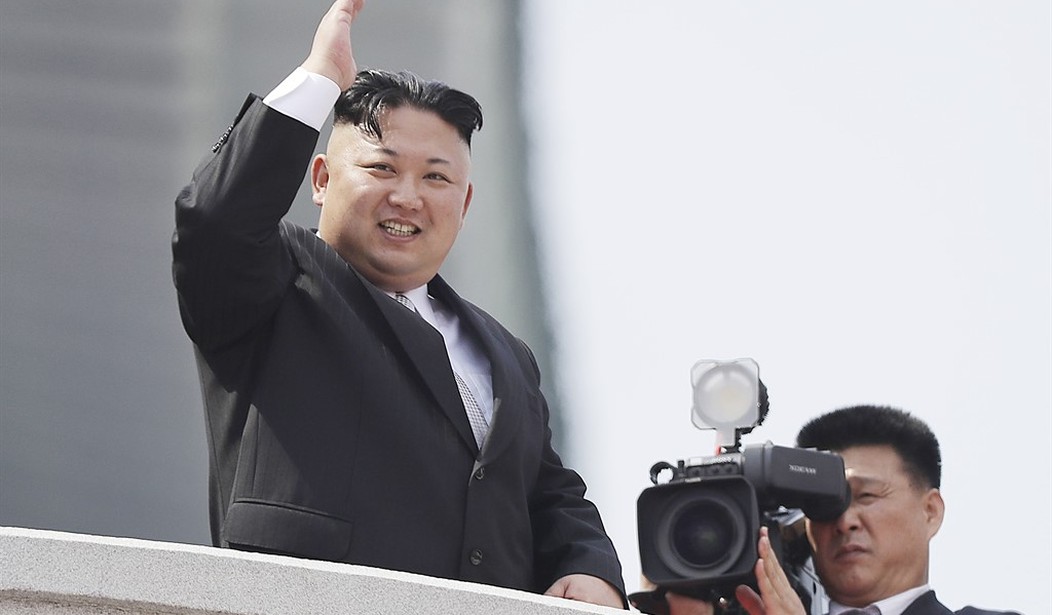Happy Friday! Perhaps Kim Jong-un had something specific in mind for his test of an ICBM last week. A review of activity at key nuclear facilities in North Korea show more reprocessing cycles than previously known for nuclear fuel, raising the risk that the Kim regime has more plutonium-based weapons than the US assumes. Their production of highly enriched uranium might also be more significant too, according to an analysis seen exclusively by Reuters:
Thermal images of North Korea’s main nuclear site show Pyongyang may have reprocessed more plutonium than previously thought that can be used to enlarge its nuclear weapons stockpile, a U.S. think tank said on Friday.
The analysis by 38 North, a Washington-based North Korean monitoring project, was based on satellite images of the radiochemical laboratory at the Yongbyon nuclear plant from September until the end of June, amid rising international concerns over North Korea’s nuclear and missile programs.
The think tank said images of the uranium enrichment facility at Yongbyon could also indicate operation of centrifuges that could be used to increase North Korea’s stock of enriched uranium, its other source of bomb fuel. …
The images of the radiochemical laboratory showed there had been at least two reprocessing cycles not previously known aimed at producing “an undetermined amount of plutonium that can further increase North Korea’s nuclear weapons stockpile,” something that would worry U.S. officials who see Pyongyang as one of the world’s top security threats.
Well, they should be worried, and not just because they may have underestimated the size of Kim’s stockpiles. The basic problem is that Kim has any nuclear weapons at all, and now has a potential platform that could allow him to target US cities in Alaska and Washington. North Korea also has a potential submarine platform that could put even more states in range of a nuclear attack, although the subs themselves are not advanced enough to avoid detection by American attack subs — so far, anyway.
The increase in production points to another potential problem, which is proliferation. North Korea would love to sell nuclear weapons to marginal states and non-state actors if they could evade sanctions-enforcement efforts. (Sanctions have succeeded in choking off conventional-arms sales to some extent.) Iran would be an obvious customer, but then again, so might anyone who could pony up the hard cash the Kim regime needs. For some customers, just the nuclear material might be enough. If Pyongyang is producing it in excess of their ability to produce weapons, that might become a concern.
In all likelihood, though, Kim wants all the nuclear material he can produce to go into warheads in order to bolster his standing, both at home and on the international stage. So what can be done? As Victor Davis Hanson pointed out yesterday, the US-led coalition has few options, none of them good, but doing nothing may be even worse:
Australia, Japan, South Korea, Taiwan and the U.S. need to coordinate a massive missile defense project aimed at ending North Korean assumptions that even one of its missiles has a chance to reach its intended target. Such a Marshall Plan-like investment would also send a message to China that its own nuclear deterrent could be compromised and nullified by the defensive efforts of its immediate neighbors. China has made life difficult for the U.S. and its Asian allies, and it should learn that the allies could make things even more problematic for China.
None of our allies in Asia and the Pacific wish to develop nuclear weapons, both for historic and economic reasons. But the United States should inform Russia and China that allied democracies in the region may choose to develop a nuclear deterrent to stop North Korean antics — a development that would prove disastrous to both Russian and Chinese strategic planning.
Asia is already a dangerous place, with both Indian and Pakistani nuclear missiles and a likely nuclear Iran in the not-so-distant future. Do Moscow and Beijing wish to add three or four more nuclear powers near their borders? …
We are nearing an existential showdown, as failed efforts at bribery and appeasement have run their course. Only a tough, messy confrontation now can prevent a disastrous war later on.
The US has already started on the missile-defense offensive, so to speak, with its rollout of THAAD and the tests run in the region. Installing an ABM shield in the Pacific to defend against ICBMs will produce a very angry response from Beijing, but as Hanson says, we’re past the stage of clean and painless solutions. If China doesn’t want a US-Japan-South Korea ABM umbrella erected in the western Pacific, well, it knows what to do in Pyongyang.
China says it has to act with caution because they don’t want a flood of refugees across its shared border. Neither does North Korea, apparently:
North Korea has installed high-voltage electric fencing at its border with China, posing even more challenges for people seeking to leave the country or smuggle goods in from the outside world.
The fence had already been installed along the Tumen and Yalu rivers, but the barricade was not being supplied with electricity until recently, North Korean reporters collaborating with Japan-based Asia Press said. …
“It’s been said even coming within a meter of the barbed wire could bring you in contact with electricity,” the source said. “Even if the residents are not supplied with electricity it’s said they can send electricity to the barbed wire, but it’s not like there is a surplus of power.”
It’s an odd decision for a nation that rations electricity to most of the country. According to UPI’s source, the average resident in the northern province only gets power for 3-4 hours a day. Perhaps China can just take over powering the fence, and then finally push to end the Kim dynasty’s psychopathic grip on power.








Join the conversation as a VIP Member